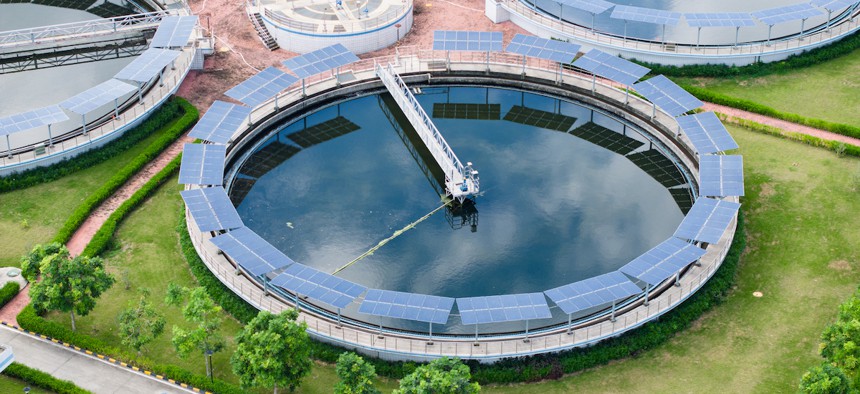Feds offer new data, research to refresh states’ water woes

Weiquan Lin via Getty Images
A new report and data tool from the U.S. Geological Survey can help policymakers better understand where water supply risks exist in the U.S. to inform efforts to better manage the critical resource.
Across the U.S., states have been grappling with increasing water supply and water quality complications largely driven by climate change, aging infrastructure and pollution. A new research and data resource from the U.S. Geological Survey looks to help inform policymakers' and other stakeholders’ efforts to address water supply risks in their communities.
In Kansas late last year, for instance, several communities’ water supplies were contaminated by nitrate pollution from crop fertilizer. The situation led to the city of Pratt turning off two wells that make up a quarter of the town’s water supply, sparking concerns of future water shortages if municipalities like Pratt have to continue shutting off that supply.
Kansas’ water crisis has prompted lawmakers to address how to better manage its water resources, with the state’s Gov. Laura Kelly recently proposing to spend $30 million to address the dwindling water supply. Similar efforts are underway in California and Arizona as officials deliberate how to more effectively store and treat their water amid ongoing dry conditions.
“Water availability is an issue everywhere in our country and beyond, and it raises the question: Do we have enough water to sustain our nation’s economy, ecosystems and drinking water supplies?” said Lori Sprague, national program manager of the U.S. Geological Survey Water Mission Area’s Integrated Water Availability Assessments Program, during a webinar Thursday hosted by her agency.
To help officials identify where water shortages exist, where surpluses are located and the quality of water supply across the nation, the USGS released a nationwide water data and availability assessment Thursday. The insights, based on data from 2010 to 2020, can help guide decision-making for sustainable water management.
“The assessment allows people to evaluate water availability across the nation at a higher level of detail than ever before,” said David Applegate, director of USGS, during the webinar. “Prior USGS national water availability assessments relied on data only from locations where water was directly measured. The new assessment uses state of the art models to fill in gaps between monitoring locations.”
The National Water Availability Assessment found, for instance, that nearly 30 million Americans live in areas where water use constitutes a high percentage of the available water supply, indicating a high degree of water stress, said Ted Stets, research ecologist and manager of the National Water Availability Assessment project and report author. The report also found that about one-third of public drinking water supplies had elevated concentrations of arsenic, manganese, radionuclides and nitrates.
Accompanying the report’s release is the launch of its data companion, a user-friendly online platform where policymakers and other stakeholders can access additional datasets from the assessment. It includes modeled water quantity conditions and will be routinely updated, Applegate said.
With an API, users can also leverage the data companion to support their own predictive models, map viewers and other data tools. Future versions of USGS’ data tool will expand to include modeled water quality conditions and other projections.
“Through the data companion, we are able to offer water use data at a finer spatial and temporal resolution that’s consistent across the entire U.S., rather than based on methods that vary from state to state,”said Shirley Leung, physical scientist and product owner of the data companion.






